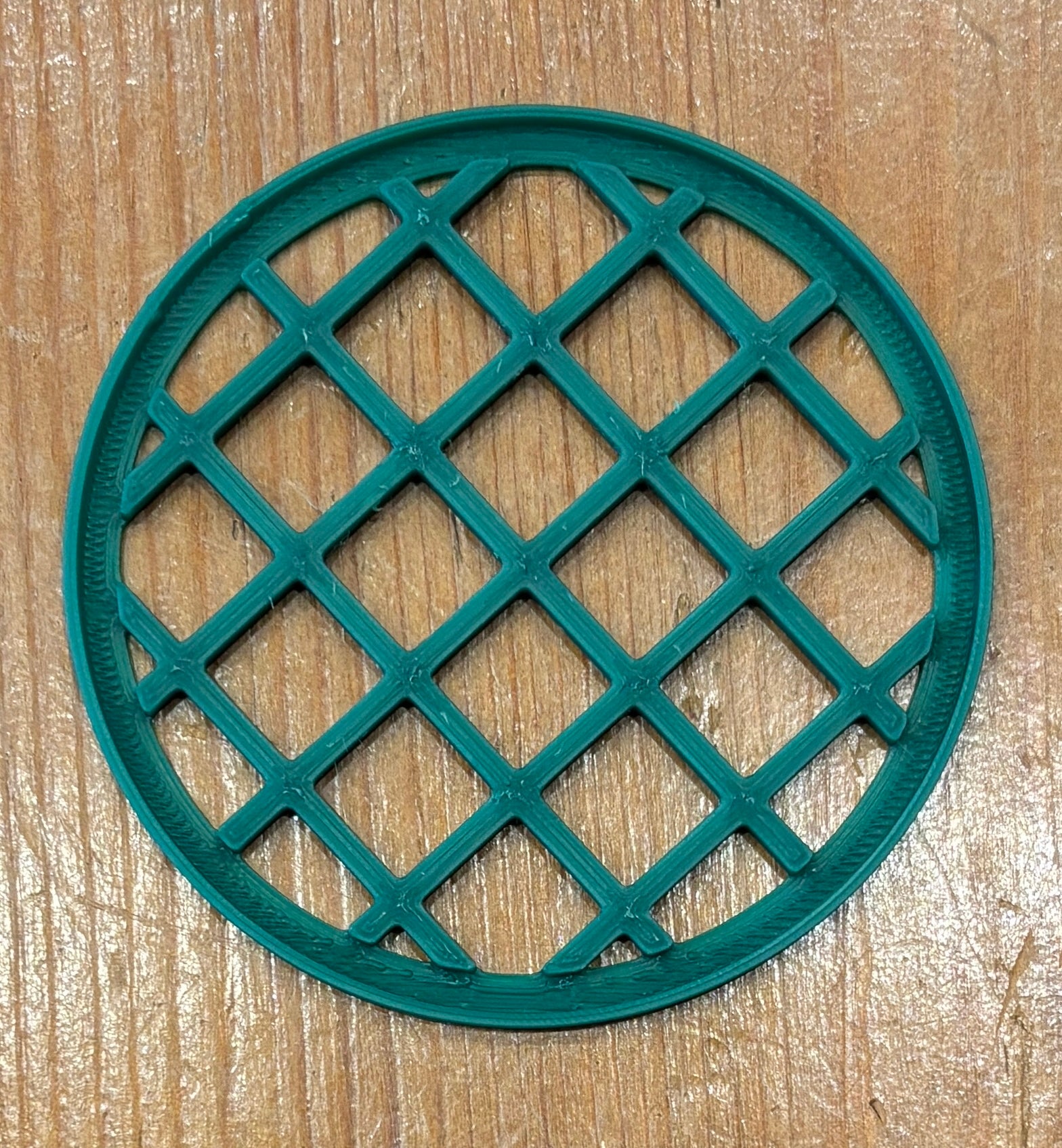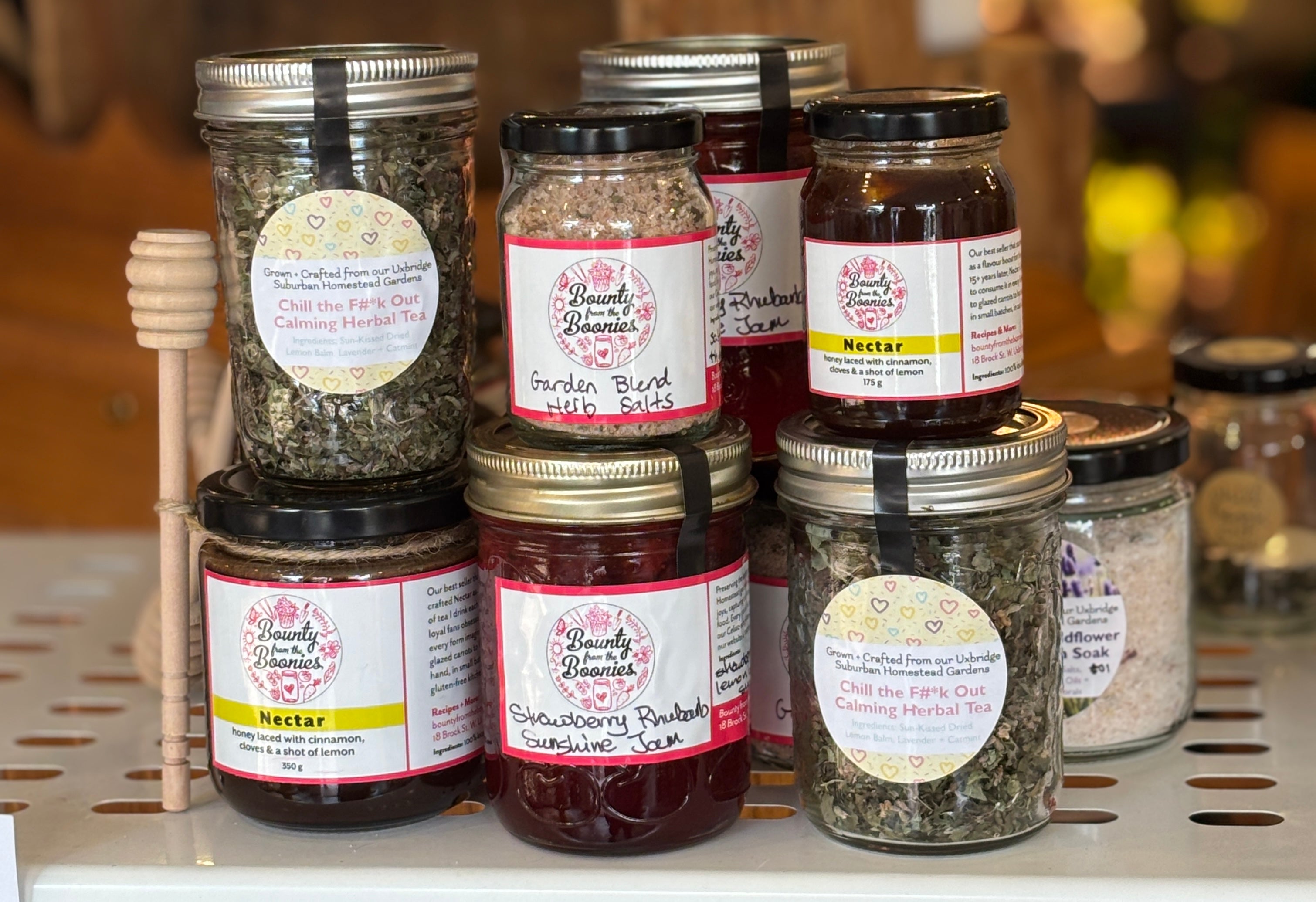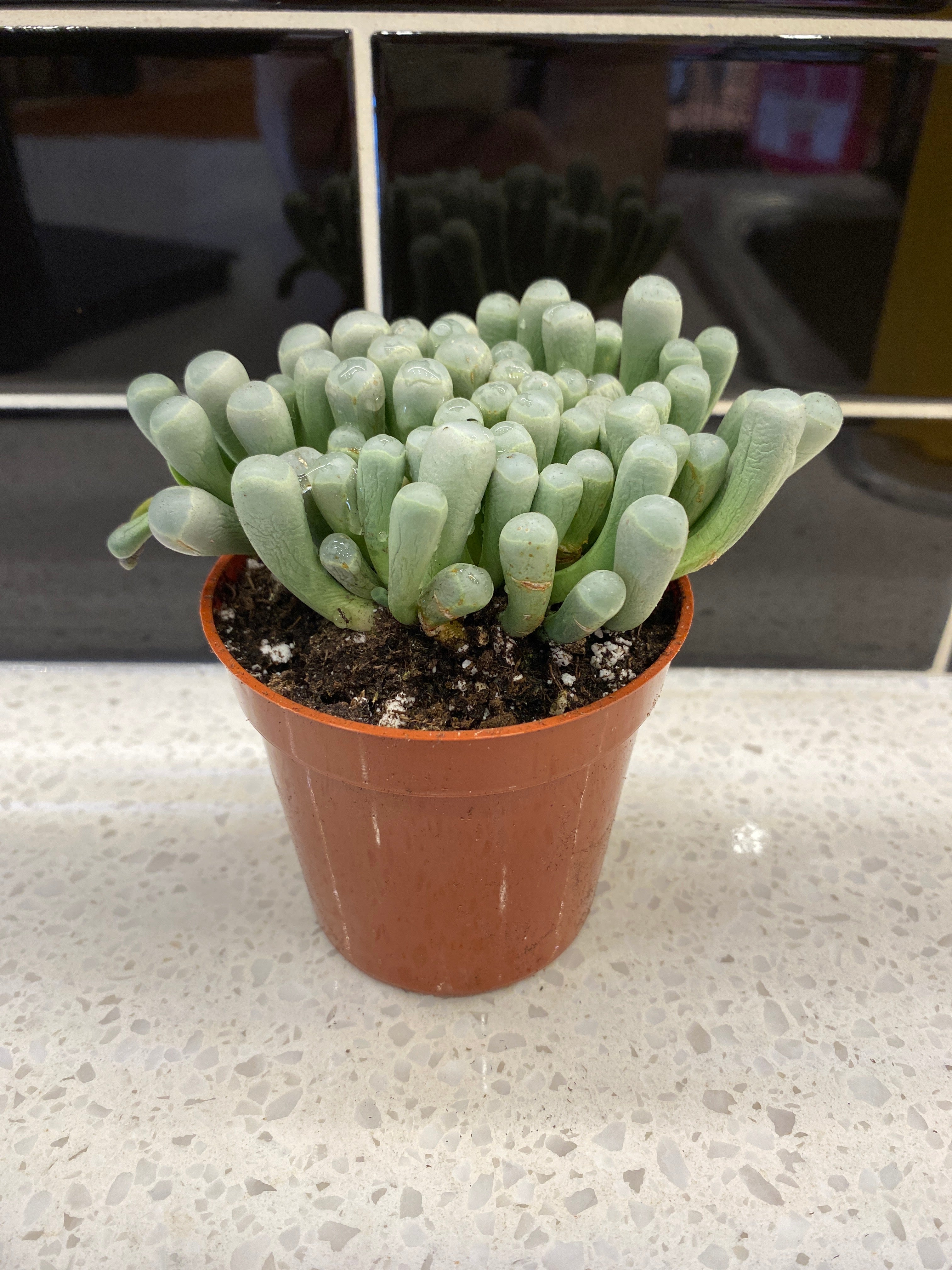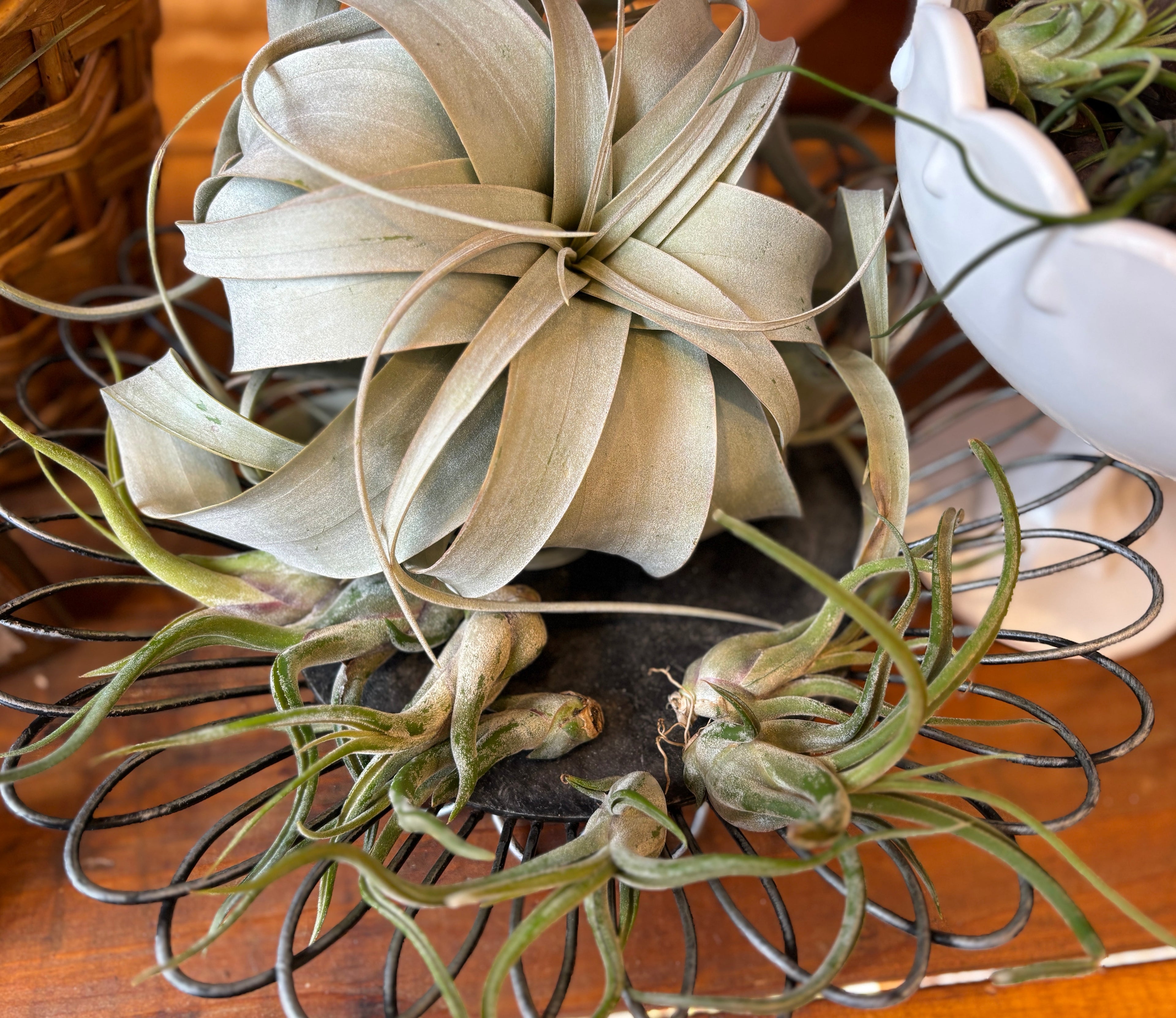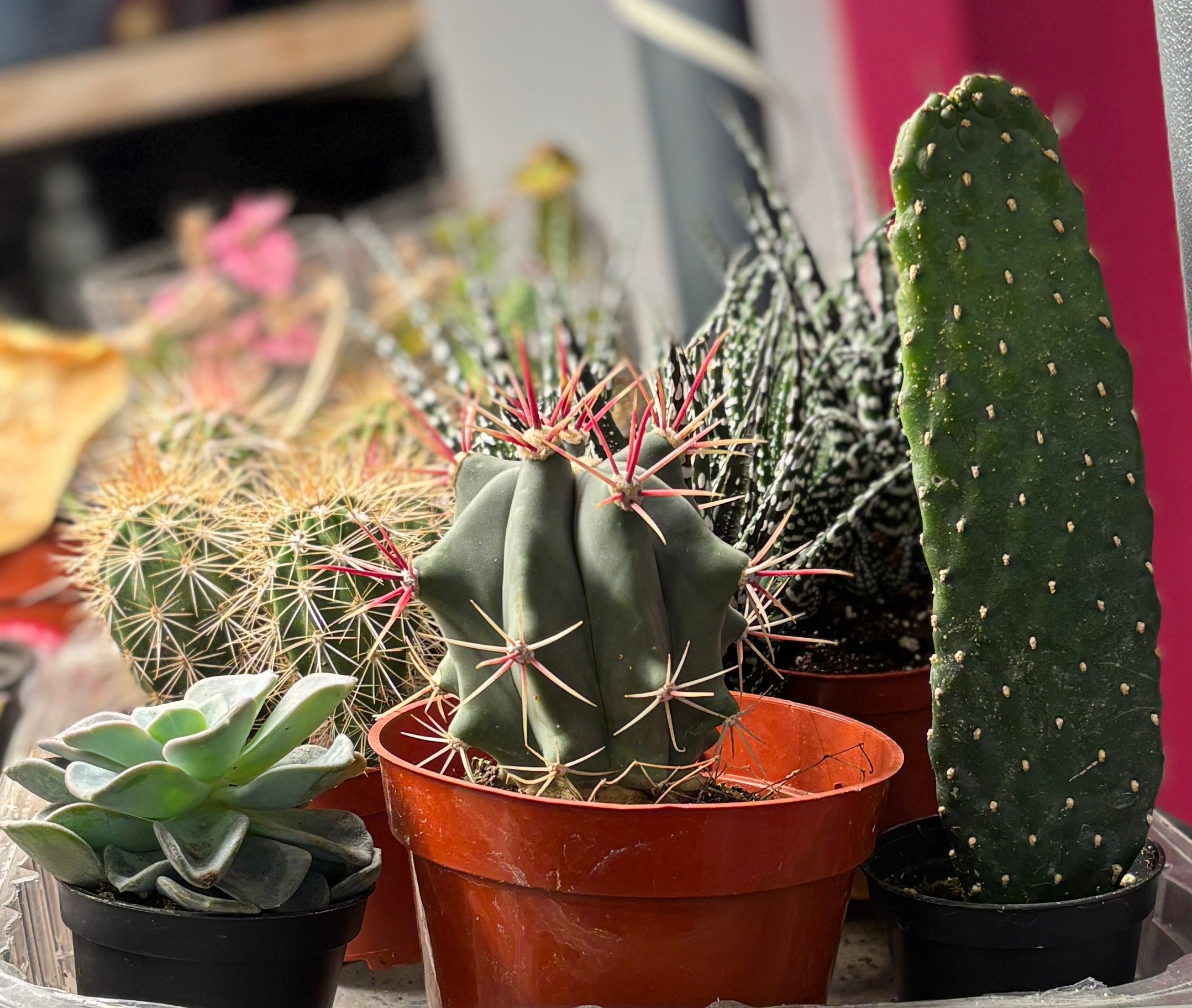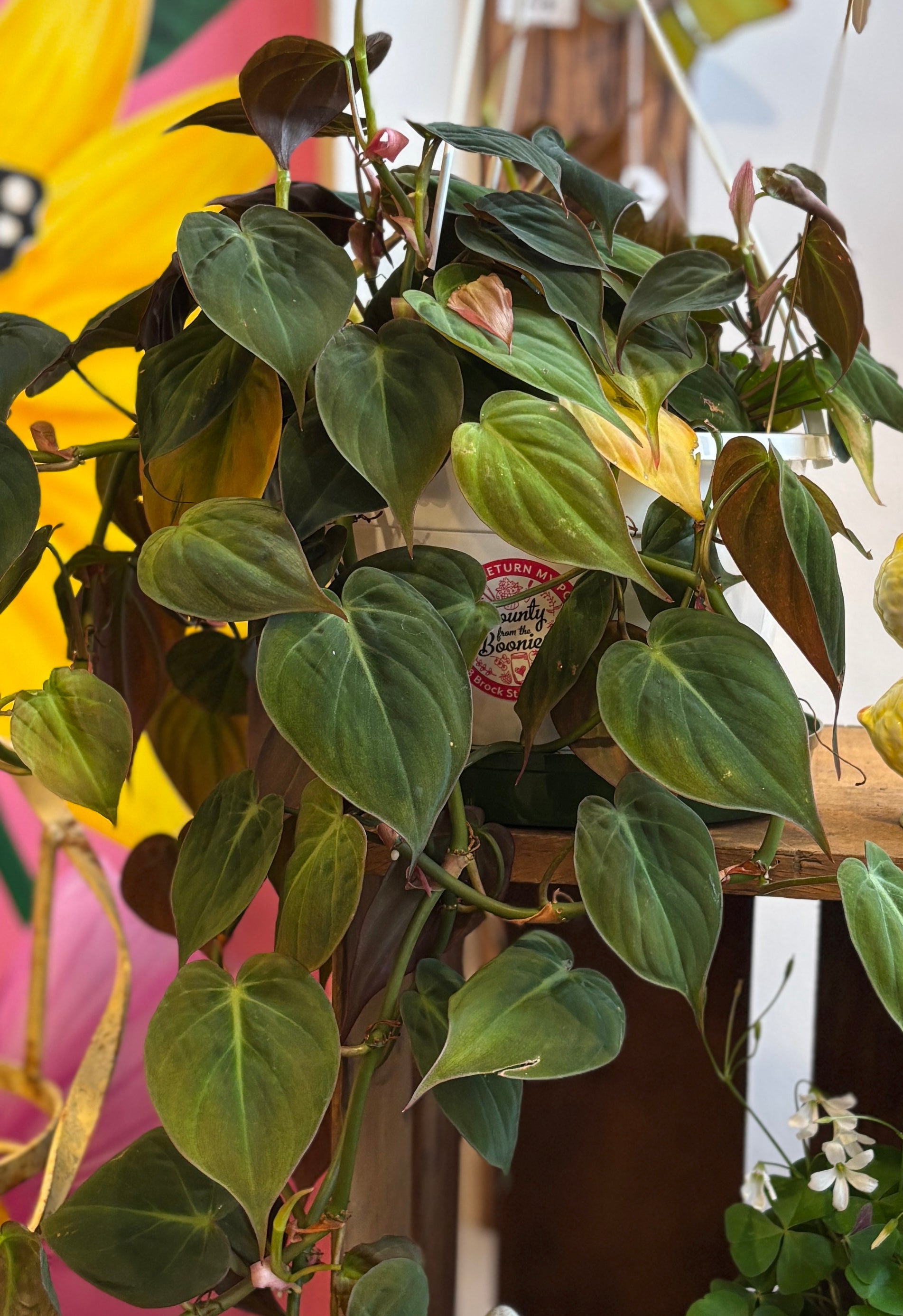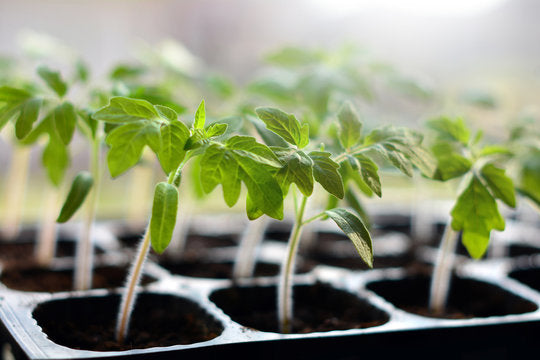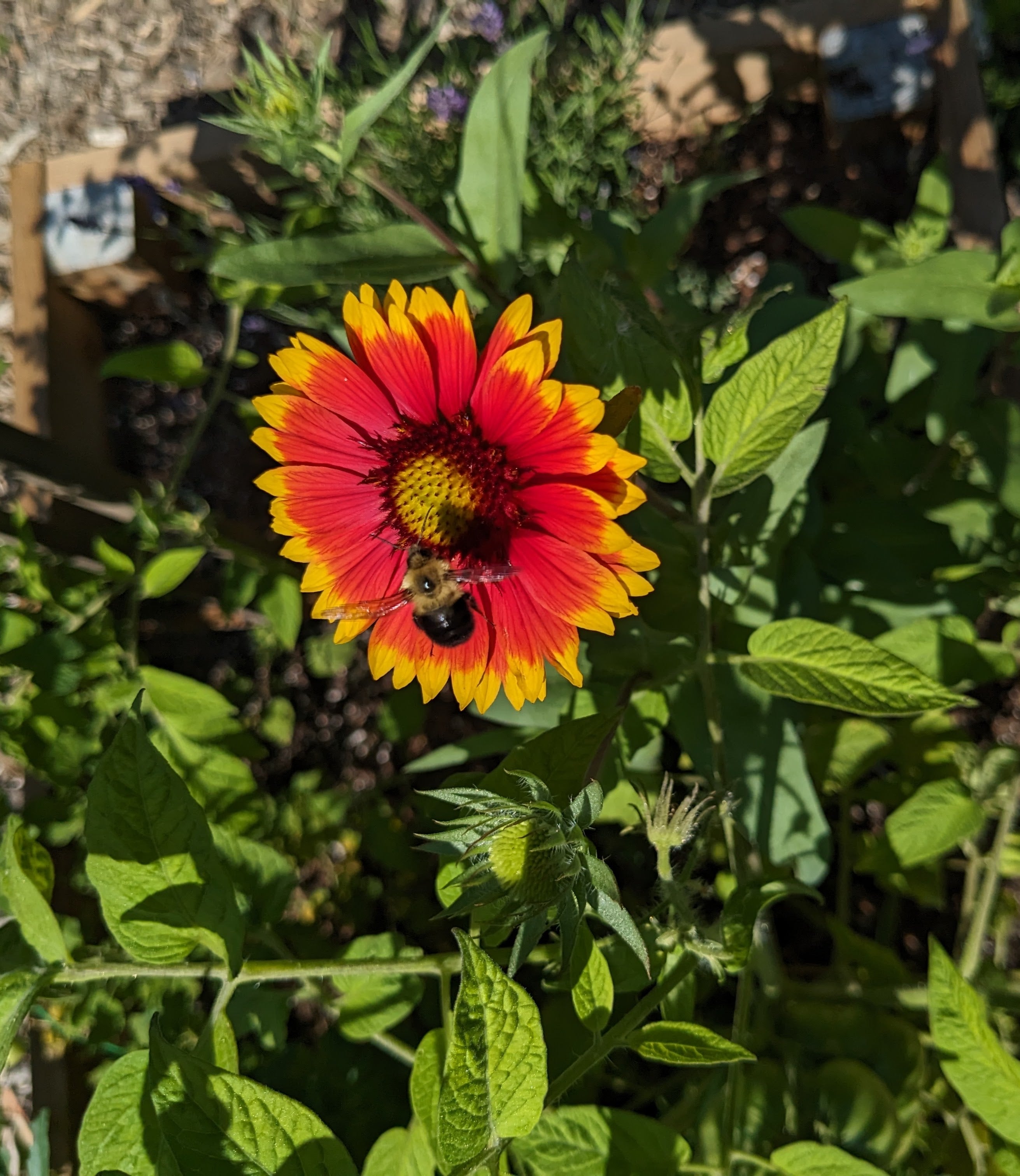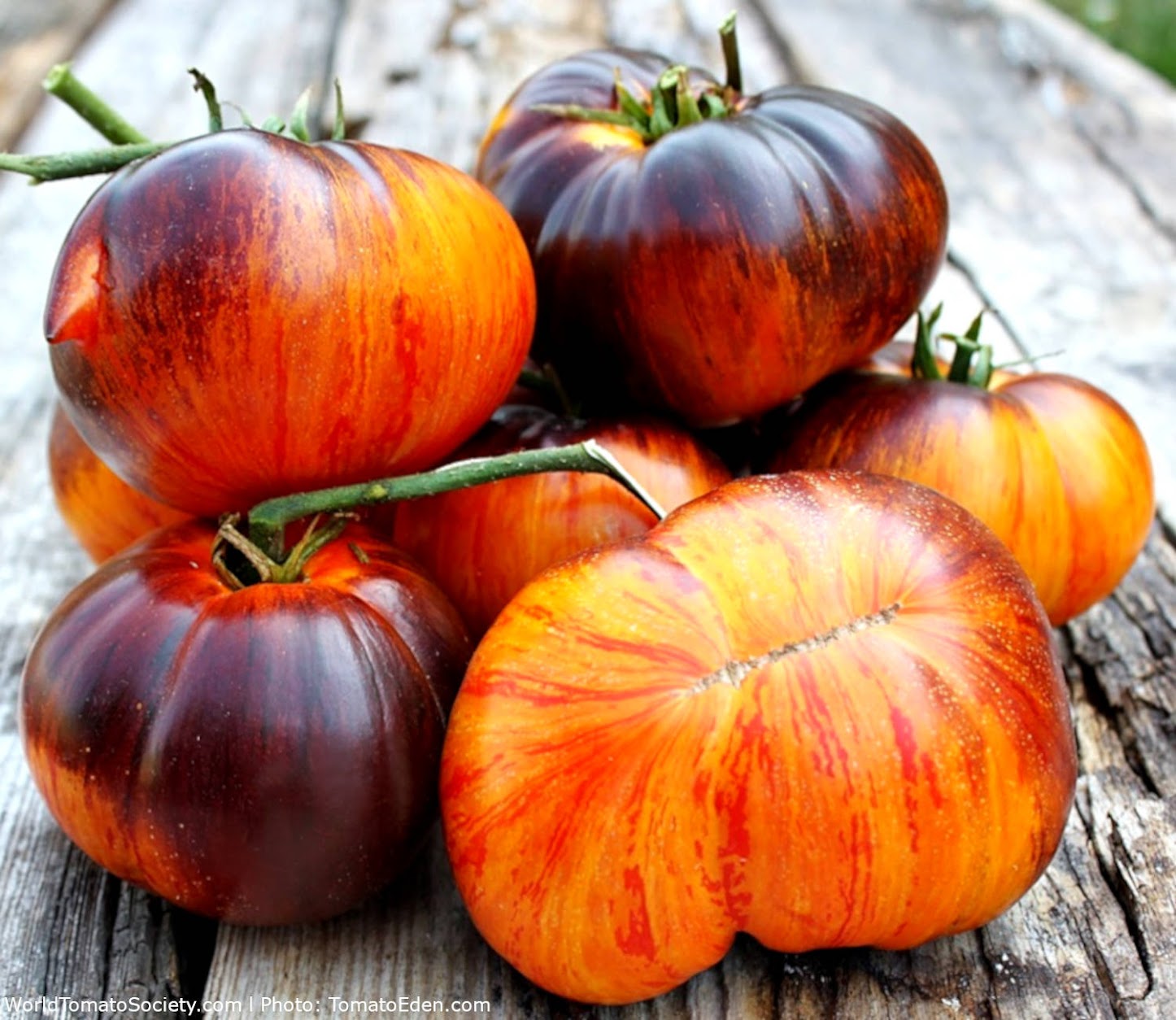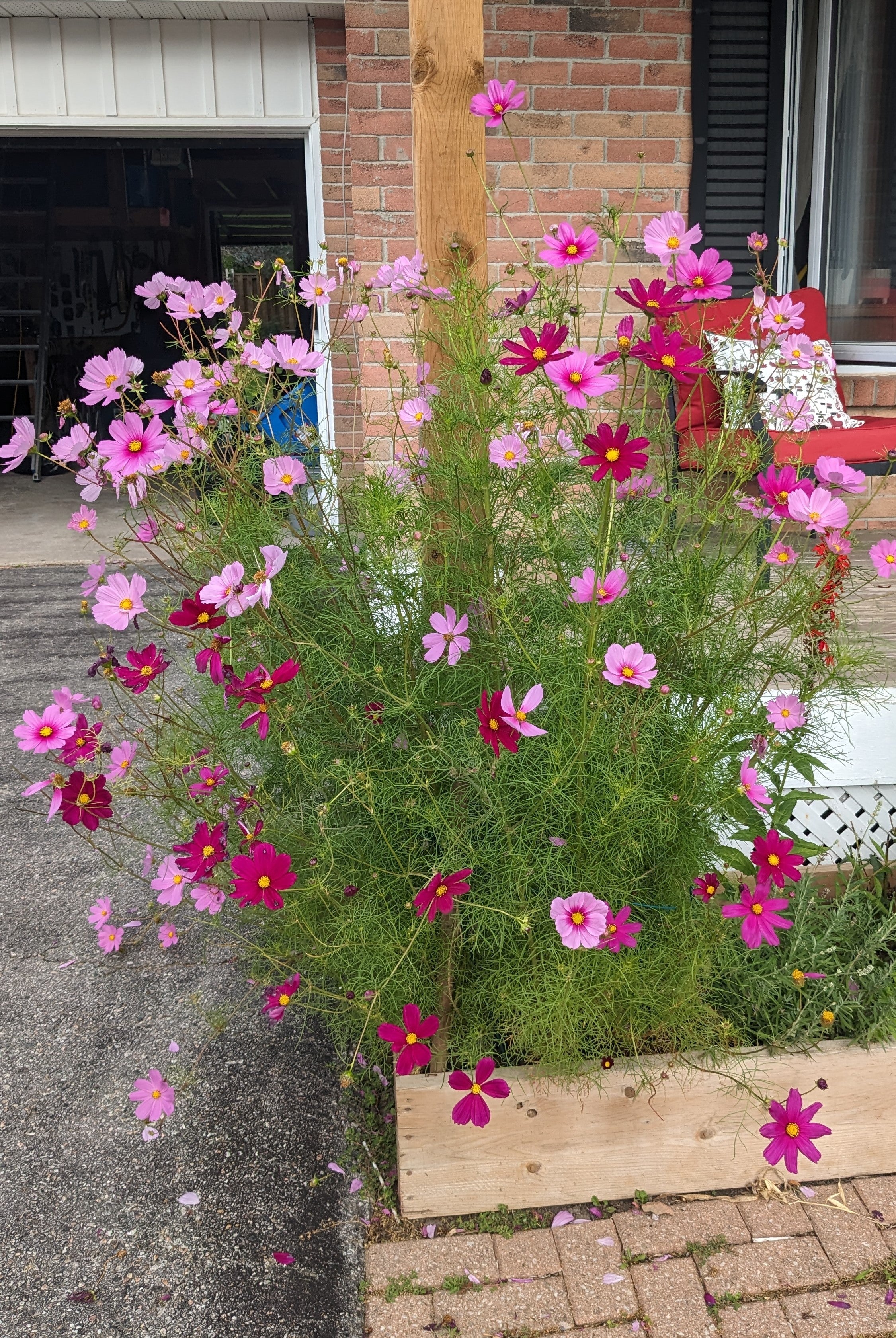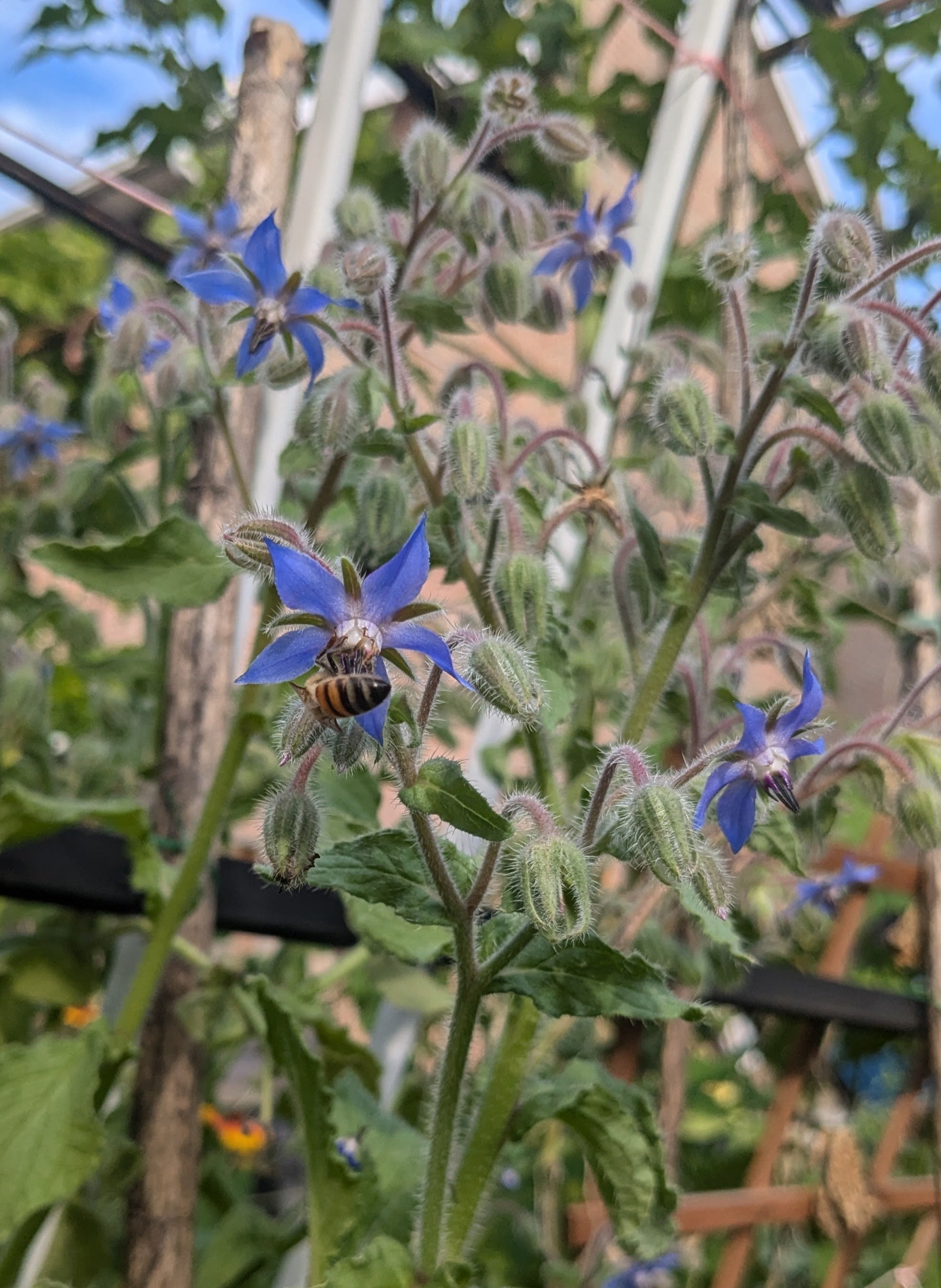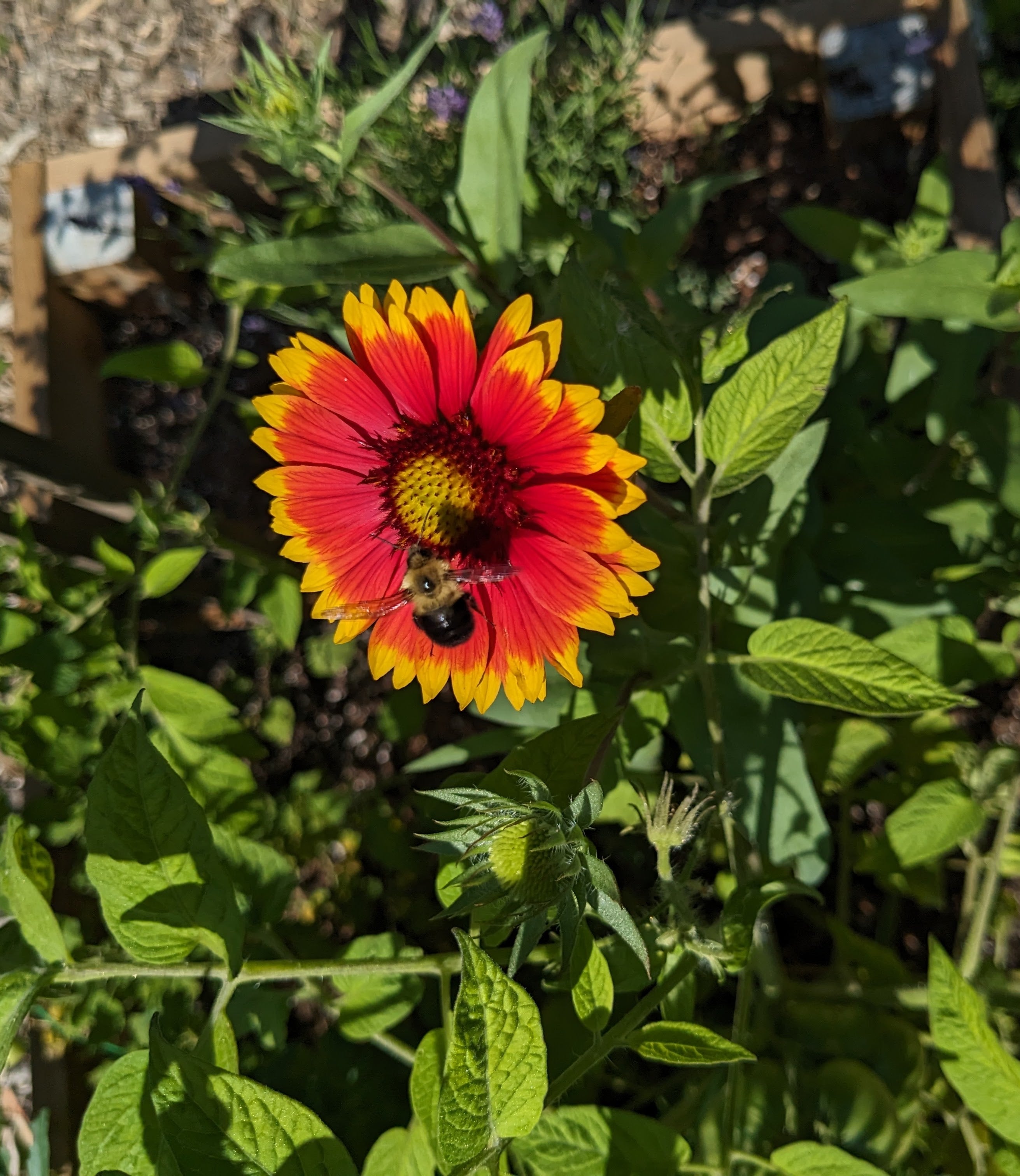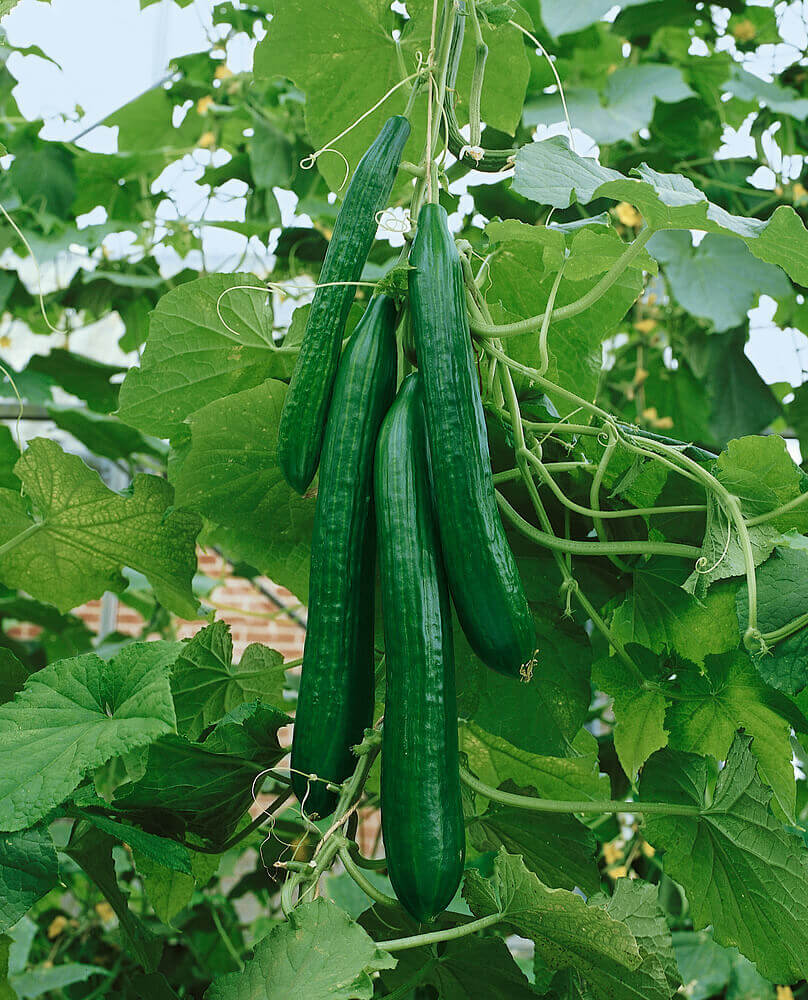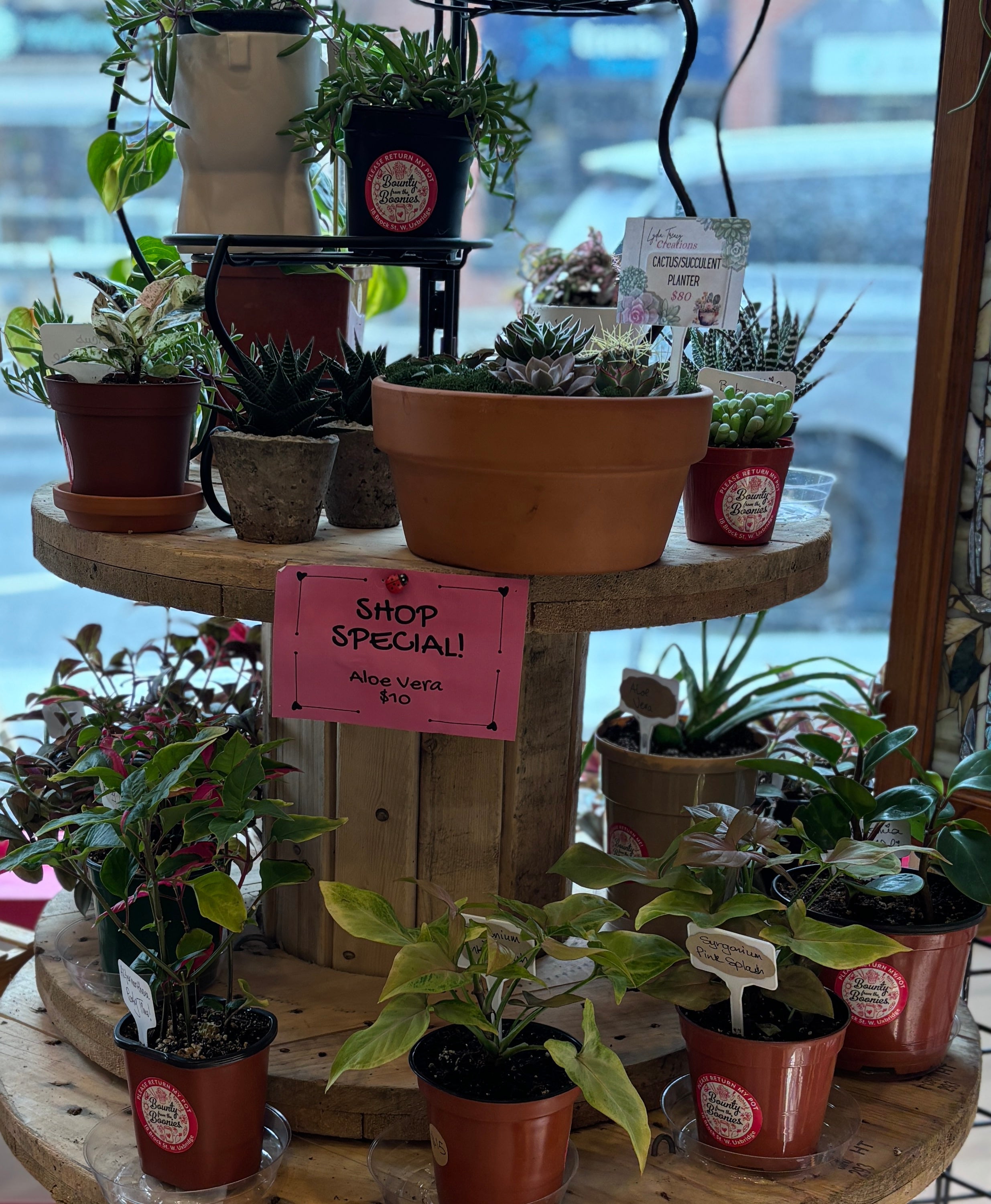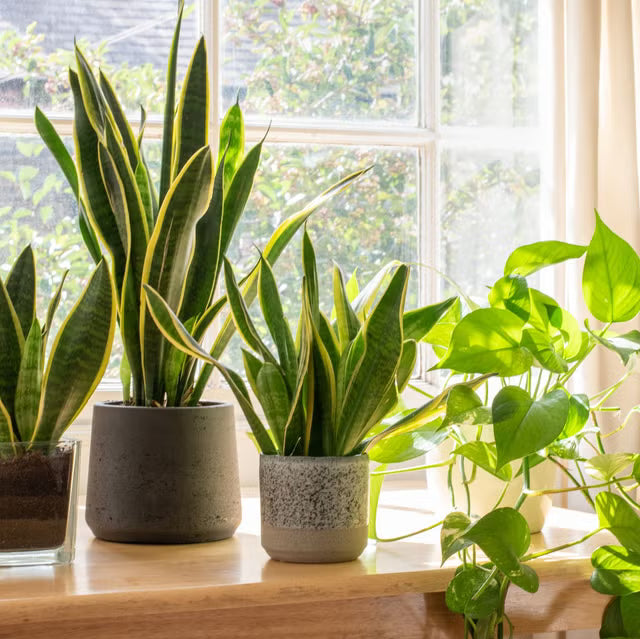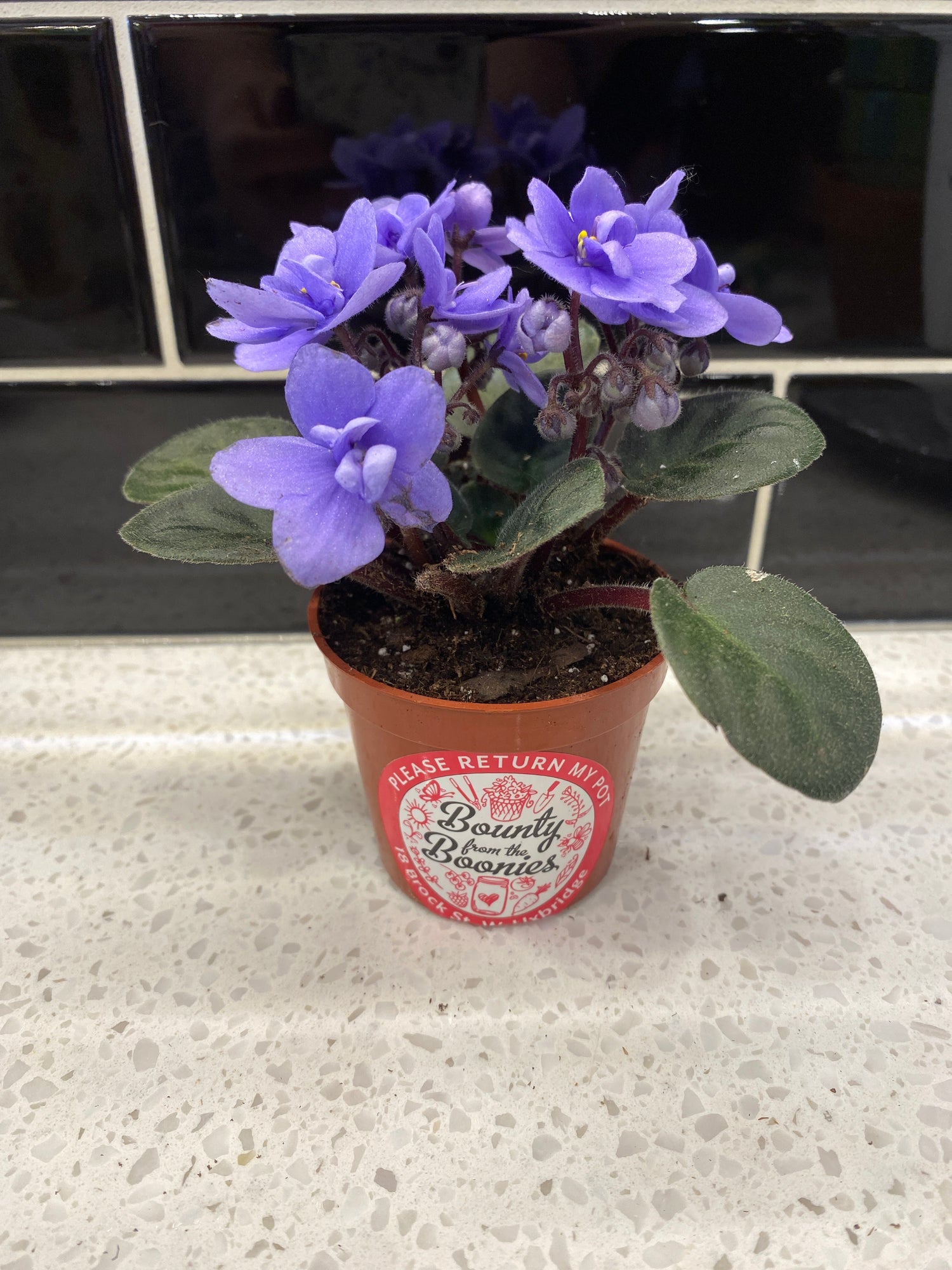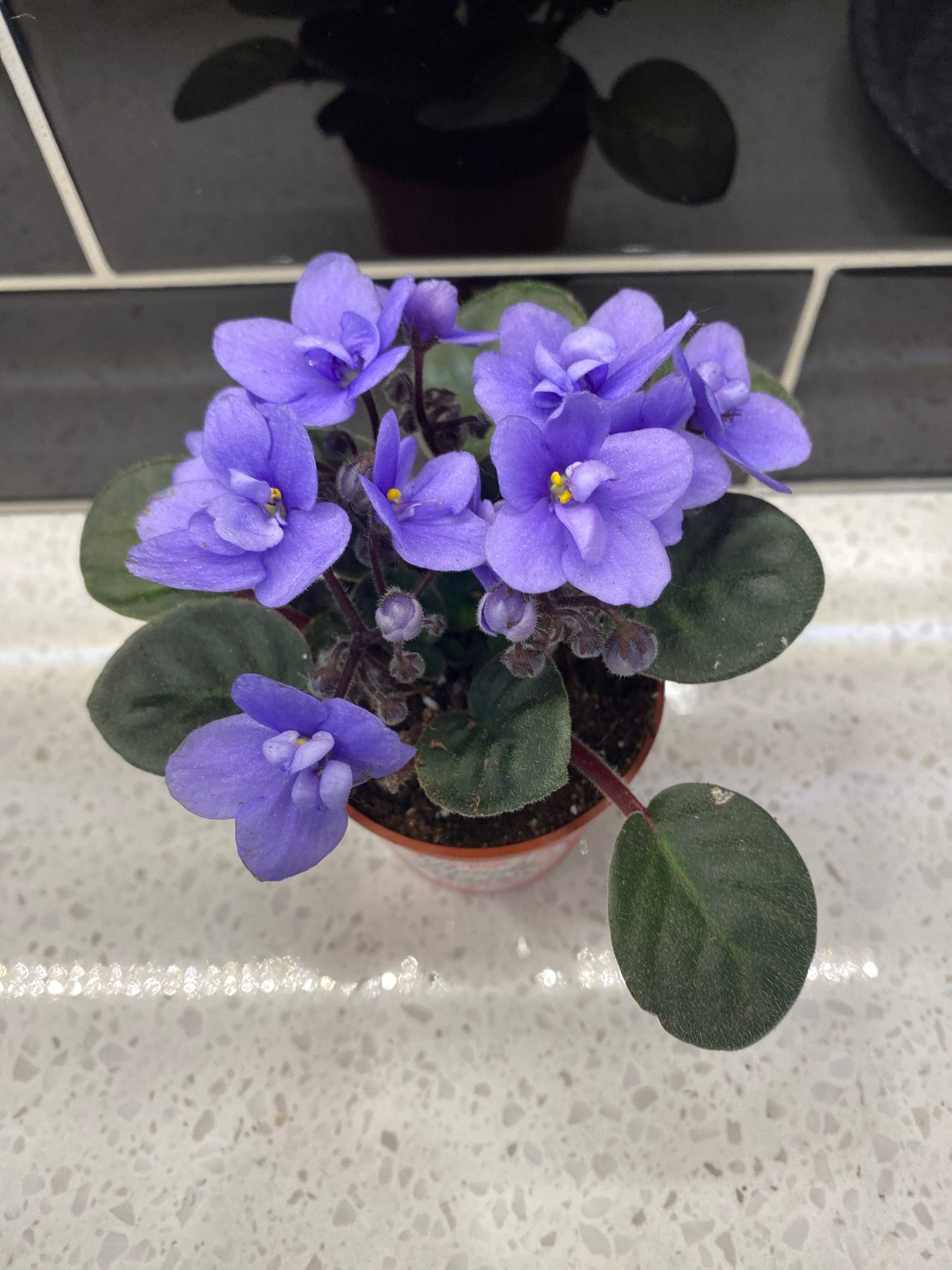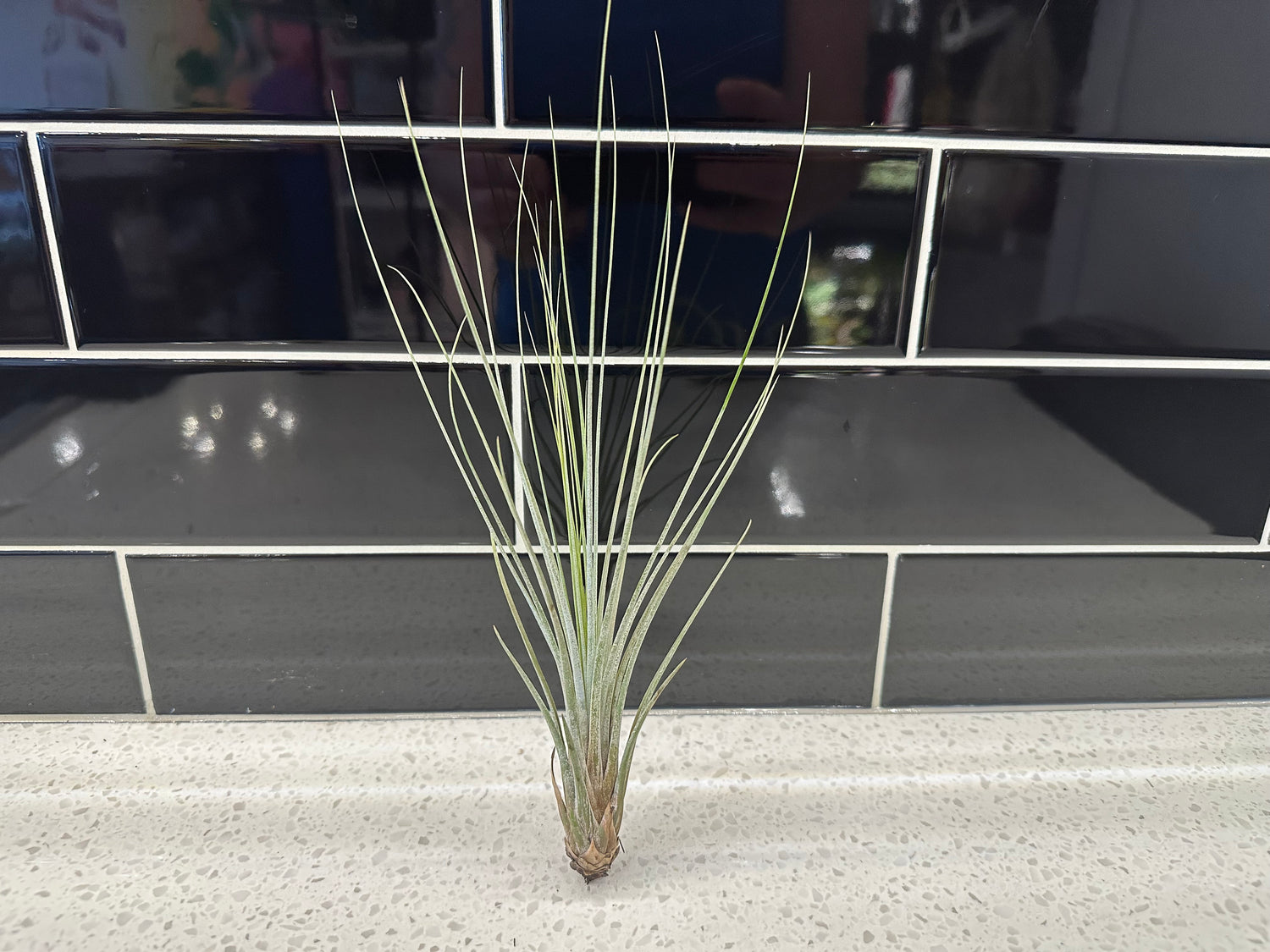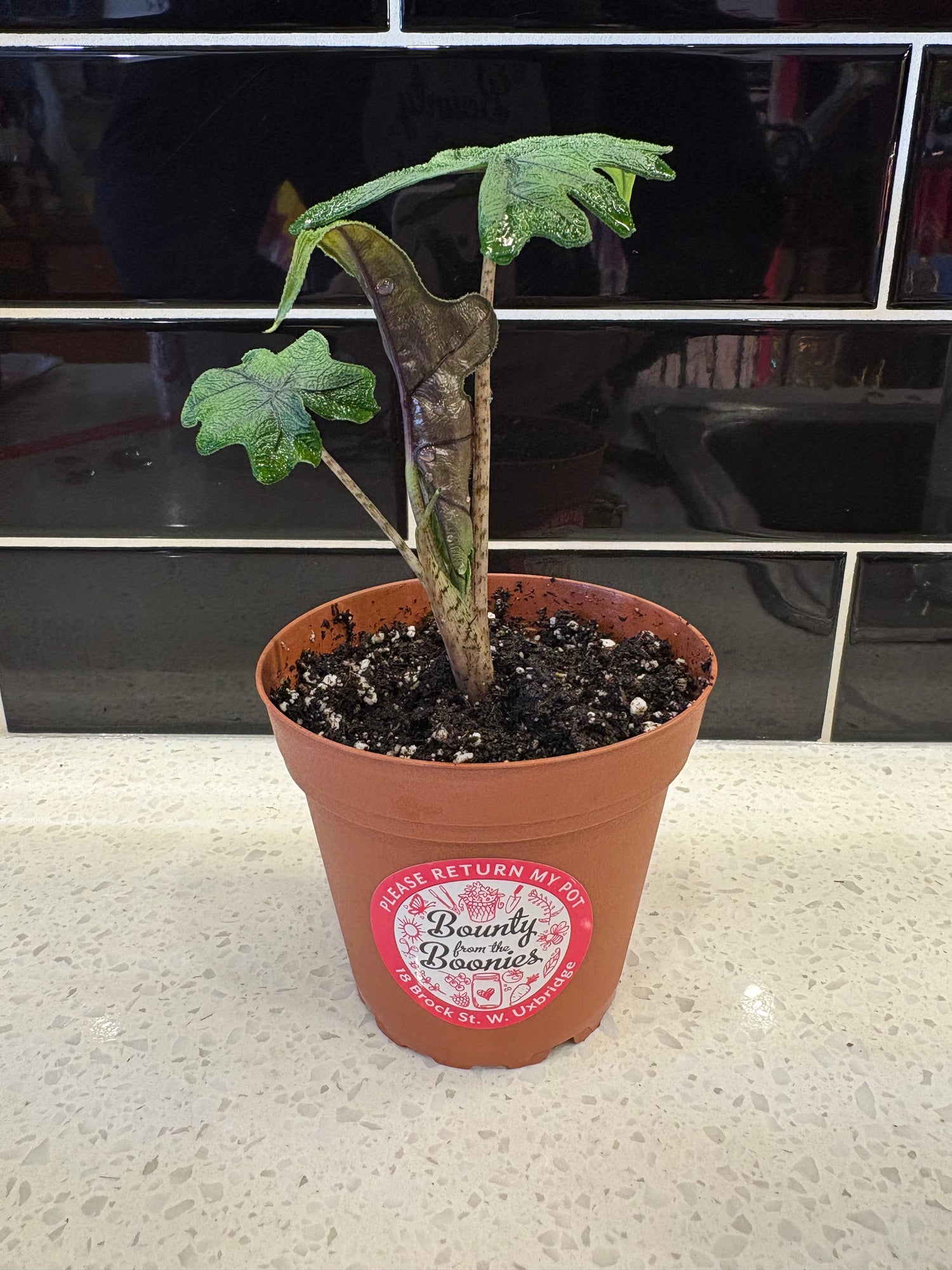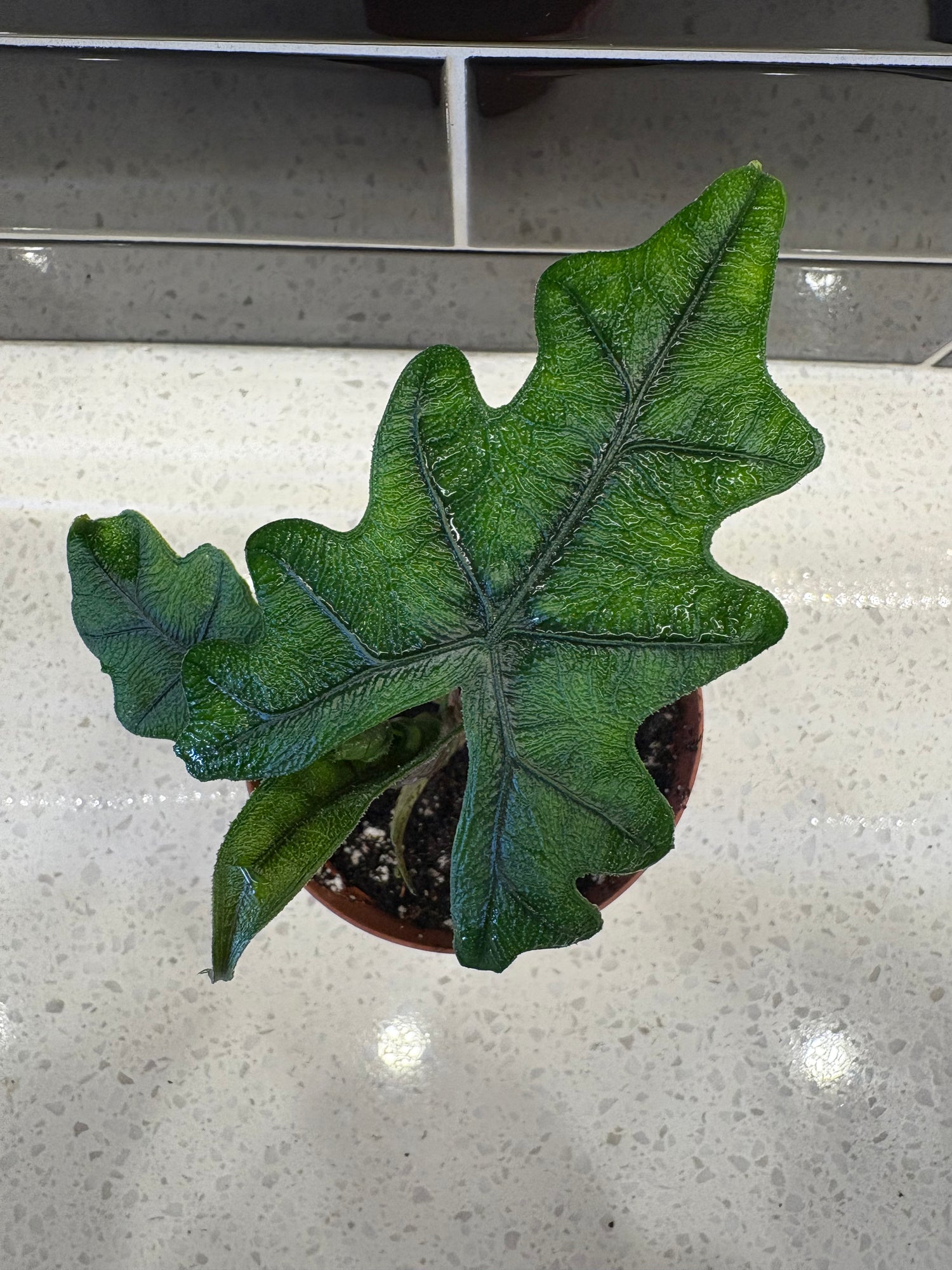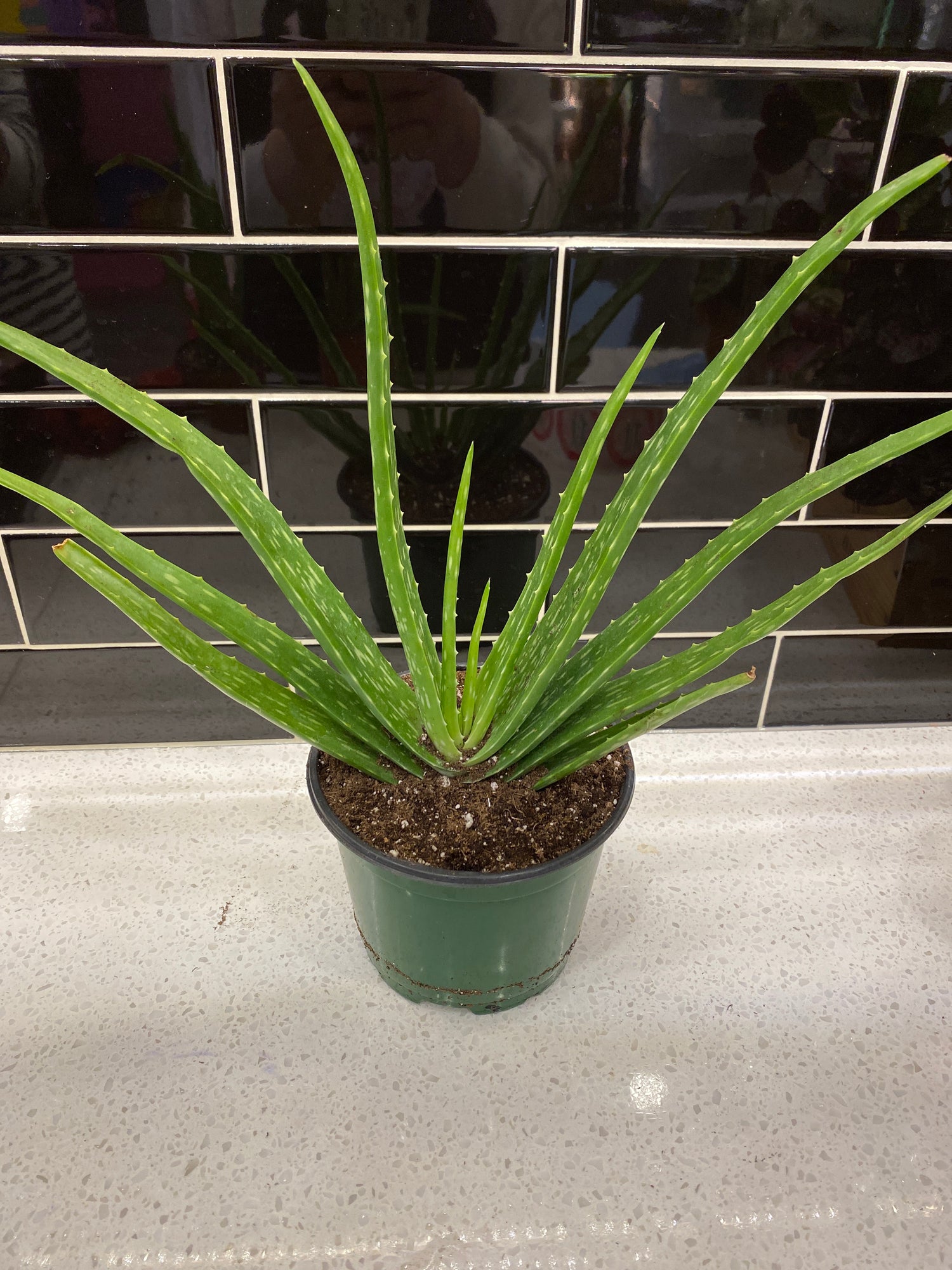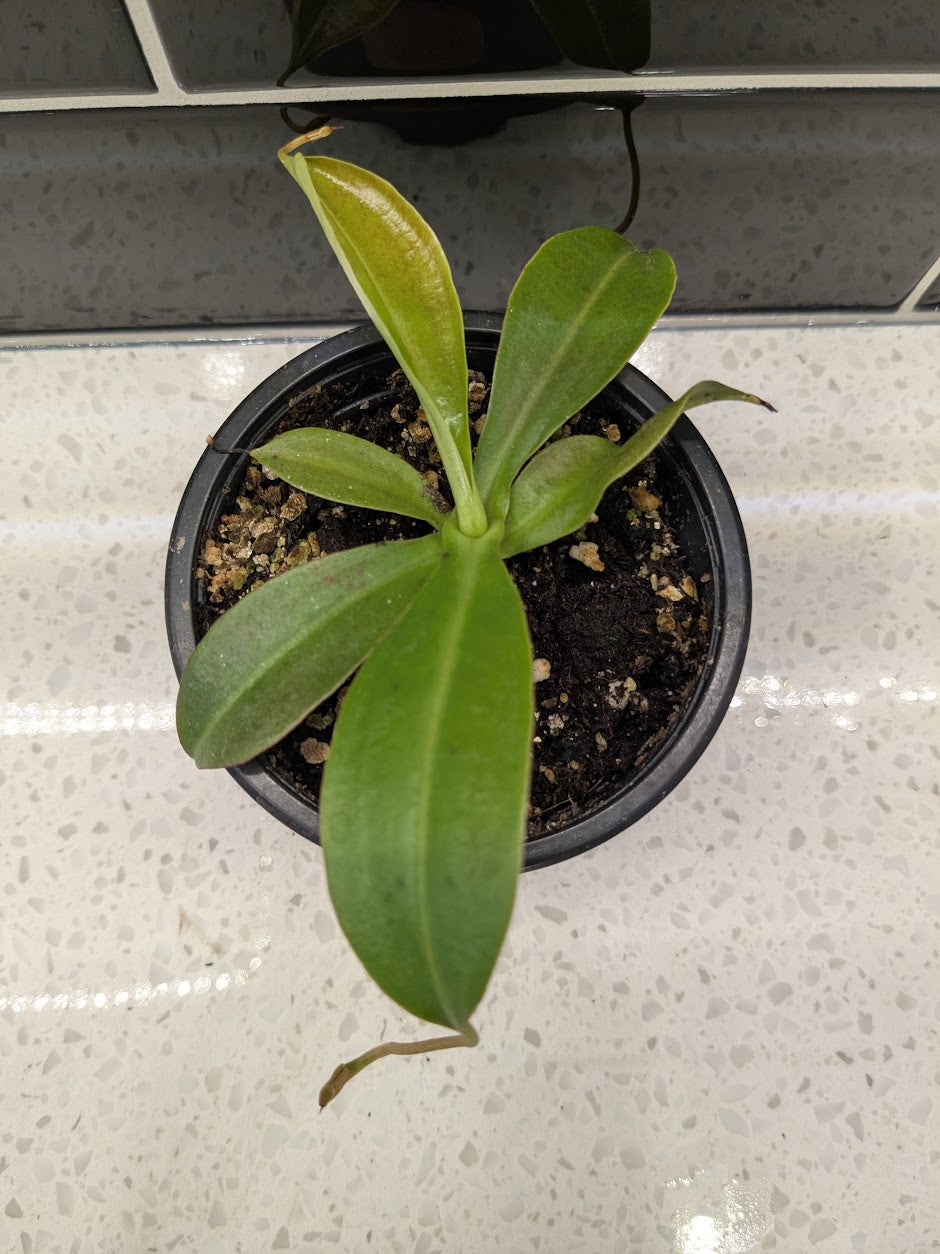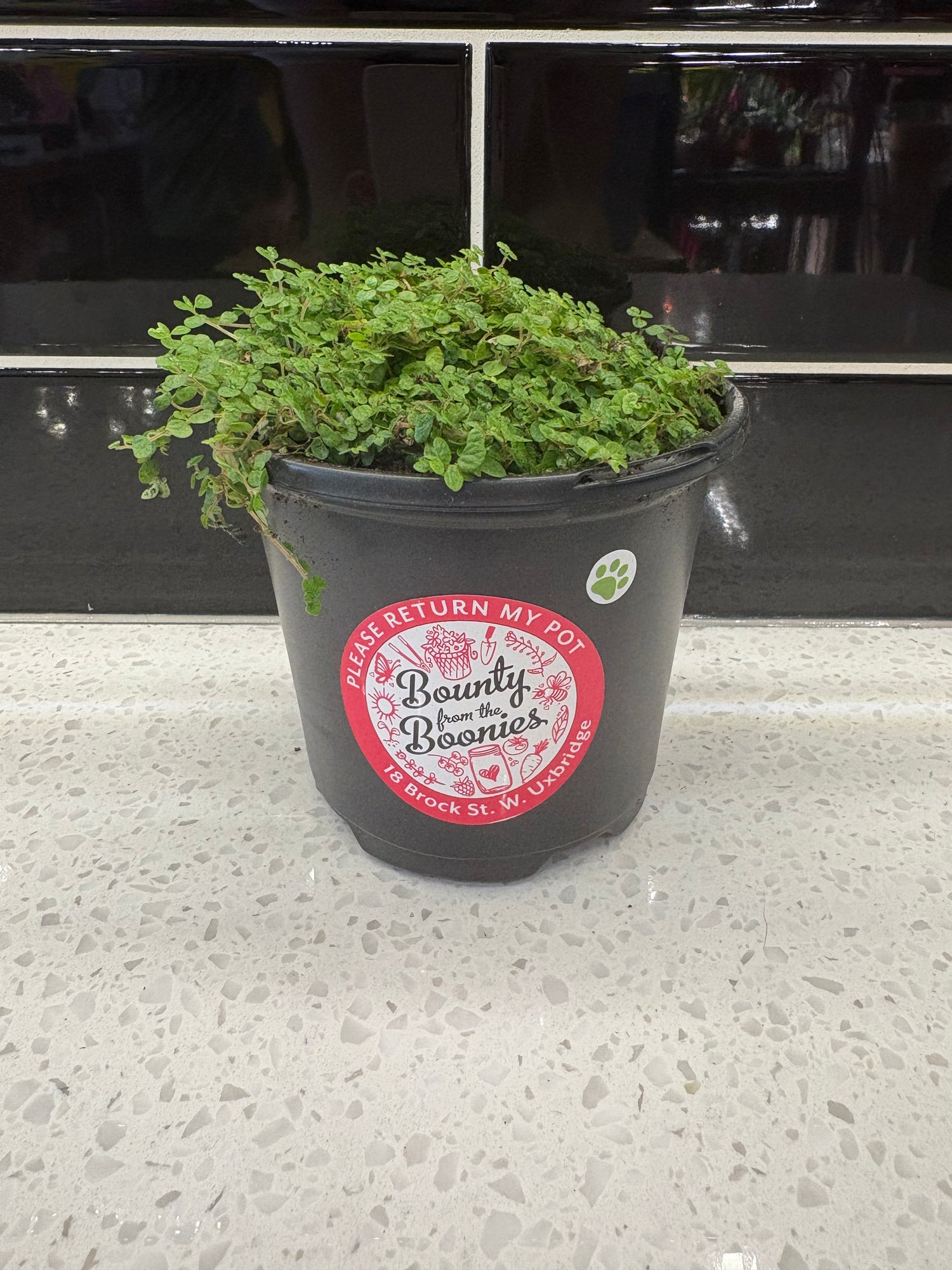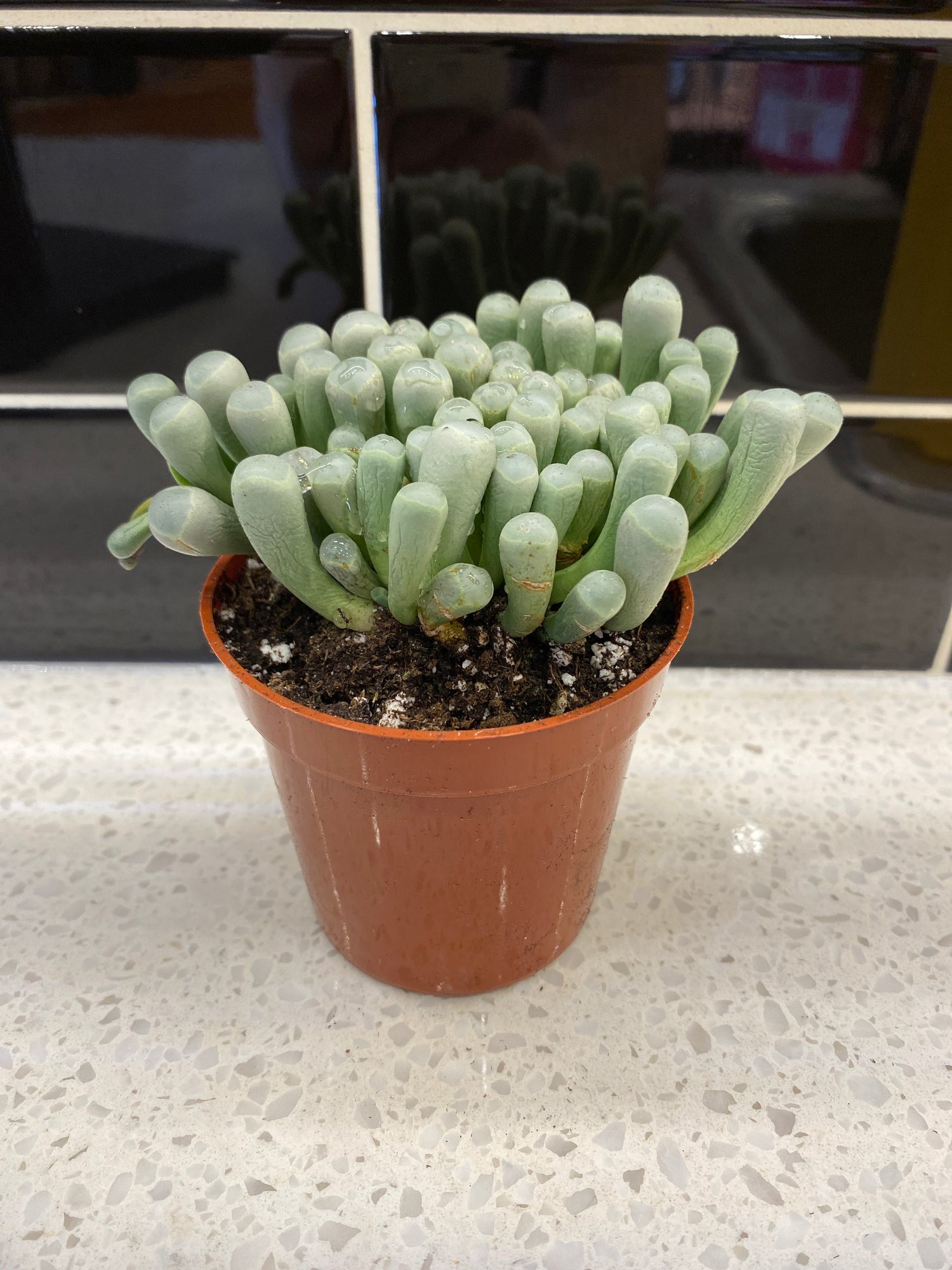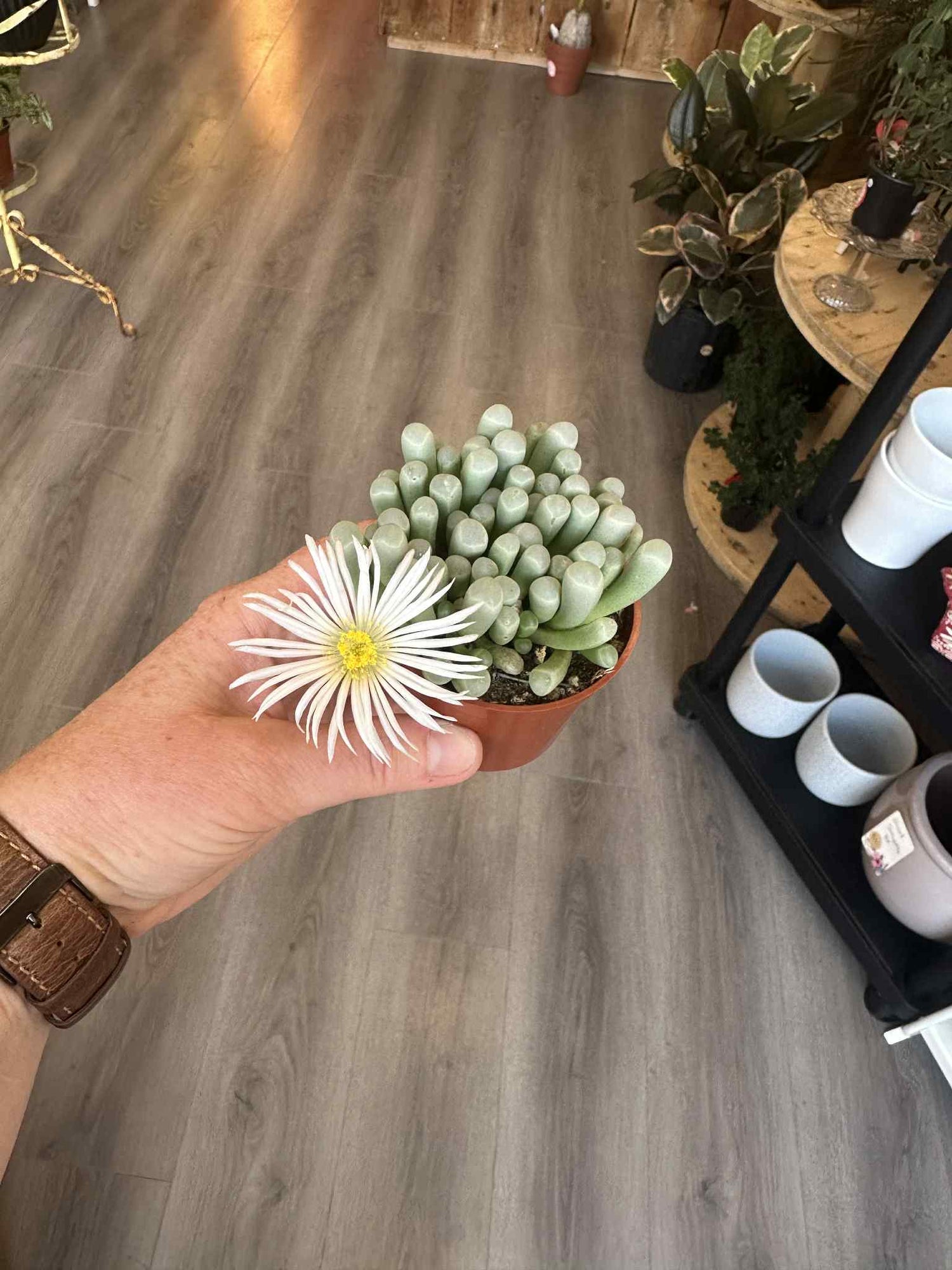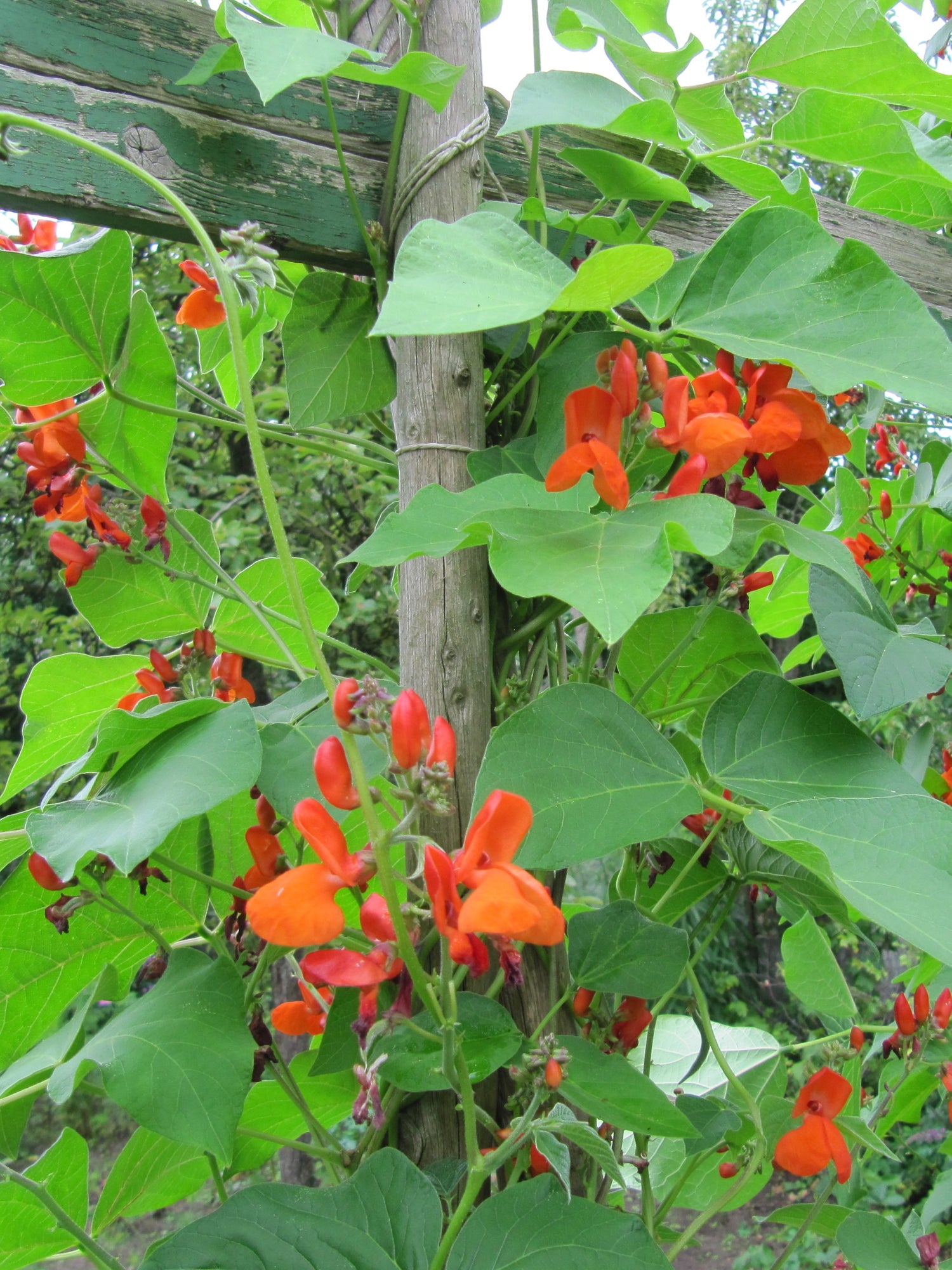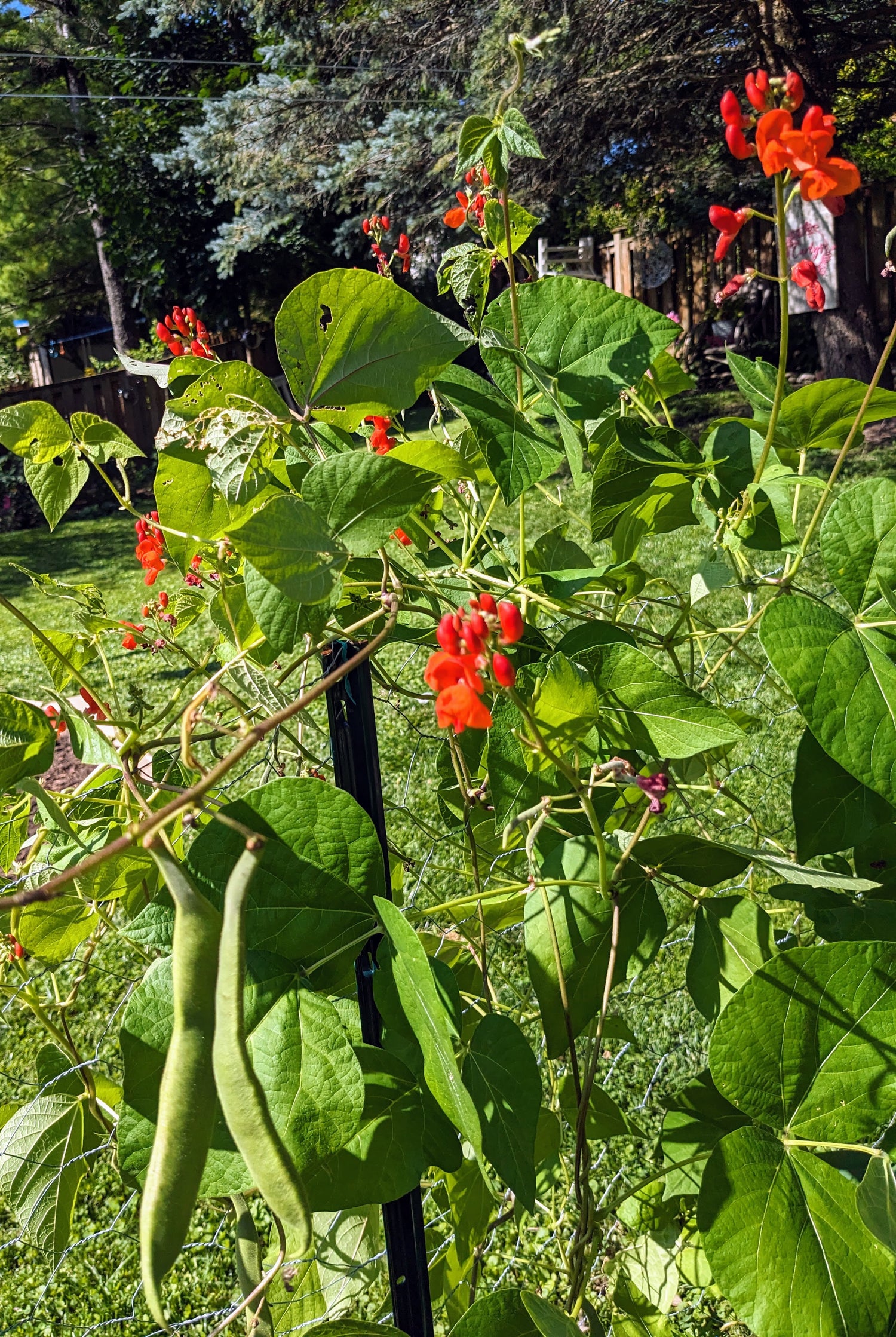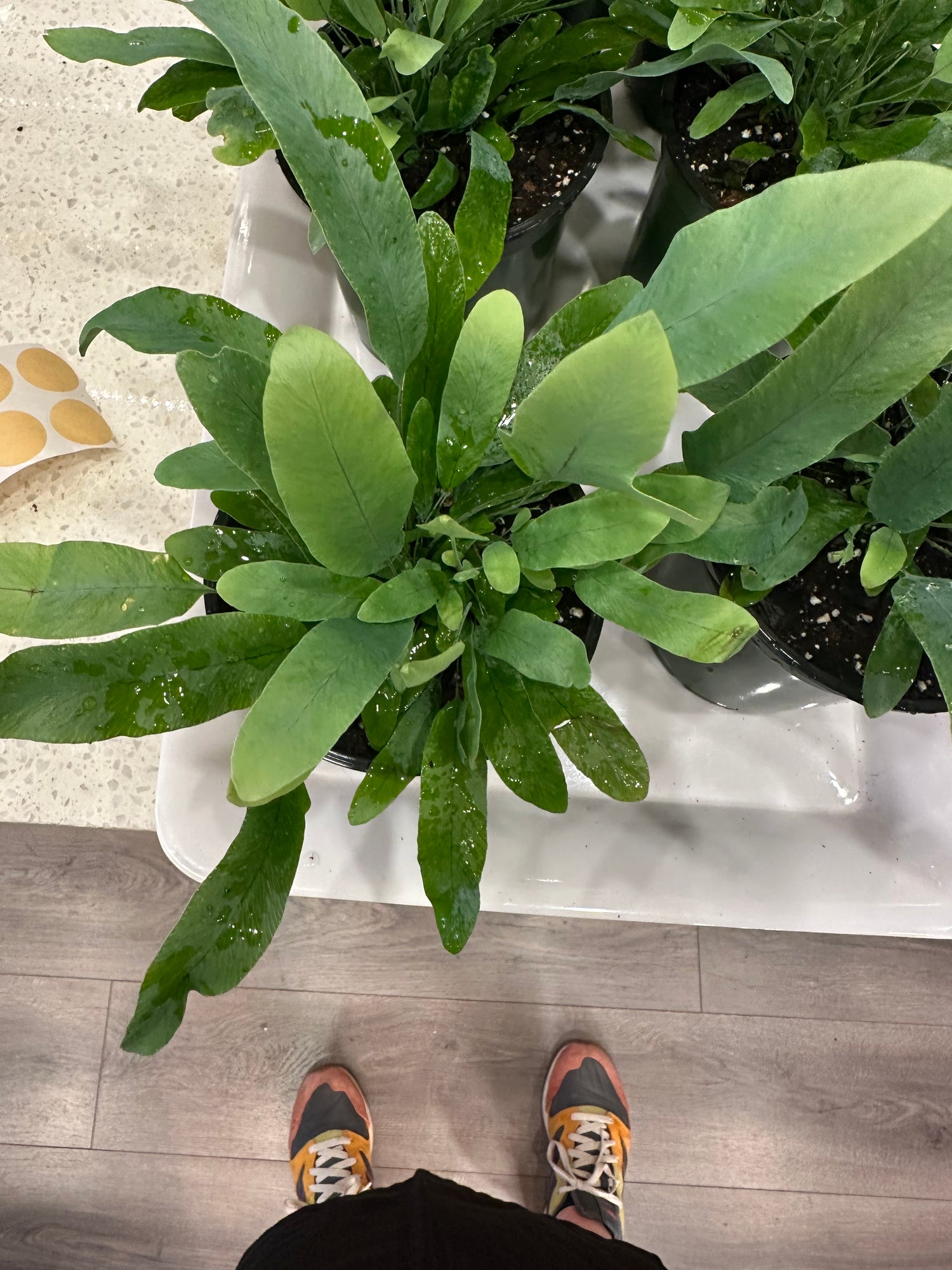Sort by:
133 products
133 products
African Violet comes in many different colours. Native to the cloud forests of East Africa. They grow in humid, sheltered, indirect lighting conditions. Often on moss-covered rocks under the shade of tall trees. Keeping the leaves dry while watering is important. If the leaves are wet and the sun shines on the leaves it can cause burn marks on the leaves.
Scientific Name: Saintpaulia Ionantha
Common Name: African Violet
Light: Bright, indirect light
Watering: Water only the soil and not the leaves. Best to bottom water when top inch is dry.
Growth: Up to 8 inches
Pet Safe: Yes
Care: Intermediate
The lowest of care plants! Air plants do not require soil to survive. Just as the name implies, they survive in air! They can be displayed in many decorative formats. With their unique look, they can be quite fun to display. They originate from Central and South America. Air Plants come in all shapes and sizes as well as multiple colours.
Scientific Name: Tillandsia
Common Name: Air Plant
Light Requirements: Bright Indirect Light, direct sun for too many hours can scorch the leaves.
Water: Once a week, submerge in water and then be sure to completely dry out.
Pet Safe: Yes
Care: Easy
Alocasia Jacklyn originates from the tropical rainforests of Indonesia. It is officially known as Alocasia Tandurusa and its local name, "Tandurusa," translates to "deer antlers" in Indonesian, referring to its unique leaf shape. The name Jacklyn comes from the fact that a woman named Jacklyn shared the plant online giving it a surge in popularity.
Scientific Name: Alocasia Sulawesi and Alocasia Tandurusa
Common Name: Alocasia Jacklyn
Light: Bright, Indirect Light
Watering: Water when the top inch of soil are dry. They thrive in high humidity. Keep evening moist but not waterlogged.
Growth: Moderate to fast depending on if it is in ideal conditions
Pet Safe: No
Care: Moderate to difficult
Easy to care for Aloe Vera are great as a window plant. Cut open one of their branches and use it to soothe sunburns and other burns. Originating from the northeastern part of the Arabian Peninsula. When this plant reaches maturity, it can produce pretty little yellow, red, and orange flowers!
Scientific Name: Aloe barbadensis miller
Common Name: Aloe Vera
Growth: Can grow 8-10 inches in four years.
Light: Bright, Indirect light
Watering: Let soil dry out before watering again.
Pet safe: No
Care: Easy
The Anthurium is known for their glossy, heart-shaped leaves with vibrant coloured waxy flowers. These "flowers" are actually called spathes. These spathes comes in all different colours such as red, pink, white and black. These plants are native to South and Central America.
Scientific Name: Anthurium Andraeanum
Common Name: Anthurium
Light: Medium-bright indirect
Growth: 1-2 feet tall
Watering: Likes a humid environment - keep evenly hydrated + mist regularly
Pet Safe: No
Care: Intermediate
A carnivorous plant with deep maroon pitchers. Native to Southeast Asia, this plant is so unique in the fact that they use they're pitcher leaves to catch their food. These pitchers lure, trap, and digest insects to supplement their nutrient intake in nutrient-poor soil. Since they are from a tropical climate, they do thrive with lots of moisture and humidity.
Scientific Name: Nepenthes
Common Name: Asian Pitcher Plant
Light: Bright indirect light
Watering: Keep evenly hydrated, likes being misted.
Growth: Slow growing, can take 5-10 years to mature.
Pet Safe: Yes
Care: Intermediate
A member of the nettle family, this plant is known for its moss-like dense foliage. It drapes nicely in a hanging pot! Baby tears originated in the Mediterranean Region. It's a creeping, mat-forming, evergreen perennial that thrives in damp, shaded area. It is known to have calming effects on some plant lovers due to the texture and softness of the foliage.
Scientific Name: Soleirolia Soleirolii
Common Name: Angel Tears/Baby Tears.
Light: Bright indirect light
Growth: it can spread 3-6 feet
Watering: Keep well watered, don’t let dry
Pet Safe: Yes
Care: Intermediate - they like high humidity
A weird little succulent that looks like…well…baby toes!
Scientific Name: Fenestraria rhopalophylla
Common Name: Baby Toes
Growth: 2-3 inches tall
Watering: Let dry between watering
Pet Safe: Yes
Care: Intermediate
Light: Bright, indirect light
I've grown Scarlet Runner Beans for many years for a very specific purpose: the flowers are a magnet for hummingbirds! I plant them along the fence of my food garden enclosure, where I train them to wind horizontally - each seed produces a vine 10-15 ft. Ruby Throated Hummingbirds (the only type I've seen in my Zone 5 gardens) visit the scarlet flowers, then zoom to the fruit and veggie plants, herbs and native plants. It's a joy to see.
While usually grown for their splendid flowers, every part of this versatile veggie is edible! The starchy roots, young leaves and even the flowers can be eaten. (Check out the bright pink-light purple fresh seeds! So fun.) Runner beans must be thoroughly cooked before eating, as they contain traces of lectin (phytohaemagglutinin), which is toxic in large quantities. The beans are dense, with a thick texture, and slightly smoky flavour.
Dried beans store excellent in the pantry, and can be added to soups and stews after soaking.
To get the most flowers, pinch off forming pods; this sends a message to the plant to push out more buds.
Type: Vegetable
Height: 10-15ft.
Light: full sun
Soil: well draining, warm
Planting: Direct sow late spring-early summer, 1-2" deep into warm soil (too cold, and the seeds will rot), 3-4" apart.
Harvest: 75 days
The Bear Claw succulent is a plant with thick, fuzzy green leaves that have distinct, claw-like teeth along the edges, resembling bear paws. The plant is native to South Africa. The tips of the plants, under bright sunlight, can turn red!
Scientific Name: Cotyledon Tomentosa
Common Name: Bear Claw Succulent
Light: Bright, indirect light
Growth: 12-16 inches tall
Watering: Let dry between watering
Pet Safe: No
Care: Easy
The bird's nest fern is named this way because the centre of the plant resembles a bird's nest. It is also occasionally called a crow's nest fern. The Bird's Nest Fern is Native to the tropical regions of Southeast Asia, Eastern Australia and India.
Scientific Name: Asplenium Nidus
Common Name: Bird's Nest Fern
Light: Bright indirect light
Watering: They need a very deep watering followed by letting them dry out.
Growth: Can grow up to 12 inches
Pet Safe: yes
Care: Easy
These gorgeous flowers absolutely pop in the garden, producing non-stop blooms from early summer-hard frost. They crawl with bumblebees, especially through the fall - non only for food, but as a soft sleeping bed in the cooling temperatures.
Blanket Flower need full sun and love the heat. I have them all over my property, in every type of soil - once established, they are happy as long as there's sun. Deadheading will keep the flowers prolific. A beautiful cut flower, tucked among amaranth, white phlox and sunflowers in a late summer bouquet.
Type: native perennial flower
Height: 2-3 ft.
Light: full sun
Moisture: drought tolerant
Planting: needs light to germinate. Lightly cover with soil, pressing to make contact. Keep evenly moist until germination. Can be direct sown after last frost.
Care: once established, Blanket Flower is low maintenance. Deadhead for more blooms
Bloom time: early summer-hard frost
Delicate but hardy. Bring the forest inside with this adorable Blue Star fern. A popular beginner friendly plant known for its attractive blue green leaves. It originates from tropical and sub-tropical regions of the Americas.
Scientific Name: Phlebodium Aureum
Common Name: Blue Star Fern
Light: Bright indirect light
Growth: 2-3 feet indoors over several years
Watering: They need a very deep watering followed by letting them dry out.
Pet Safe: Yes
Care: Easy
In the Prayer family, its beautifully patterned leaves are sure to impress! Originating in the tropical rainforests of Brazil where it thrives under a canopy of dense forest and moisture. One of the beautiful things about this plant is that it opens up and displays its colours during the day but then closes up at night.
Scientific Name: Calathea roseopicta
Common Name: Calathea roseopicta
Light: Bright indirect light
Growth: 12-24 inches tall
Watering: Keep evenly hydrated, likes to be misted
Pet Safe: Yes
Care: Moderate
The Calathea White Fusion is a rare houseplant known for its striking, variegated leaves with green and white markings and purple underside. It can be sensitive to chemicals in the tap water and direct sun can burn the leaves. This plant is native to Central and South America.
Scientific Name: Calathea lietzei
Common Name: Calathea White Fusion
Light: Bright, indirect light
Growth: 2-3 feet high
Watering: Keep soil consistently moist with well draining soil
Pet Safe: Yes
Care: Moderate to difficult

